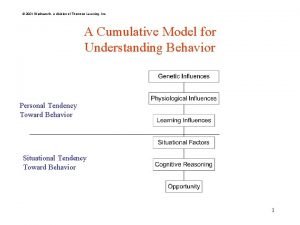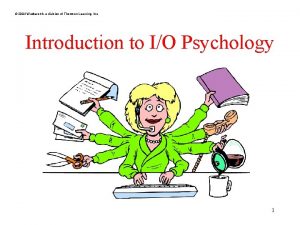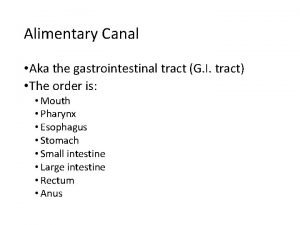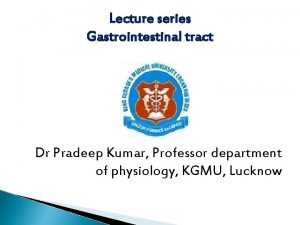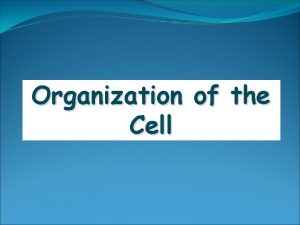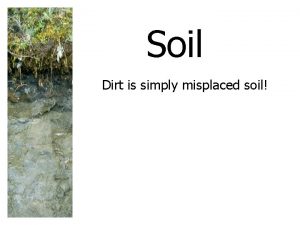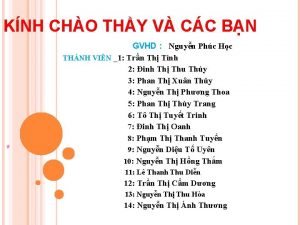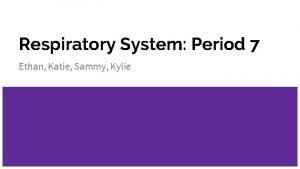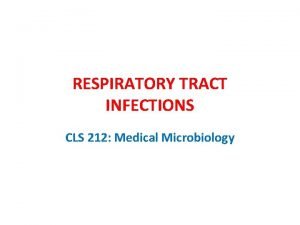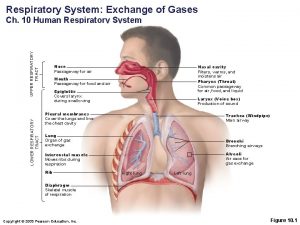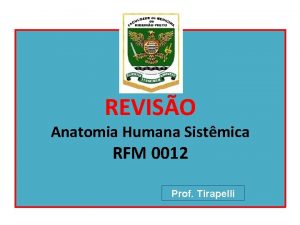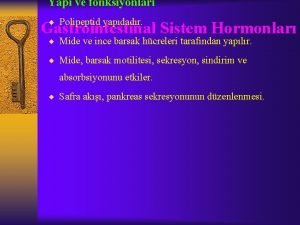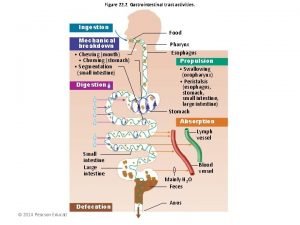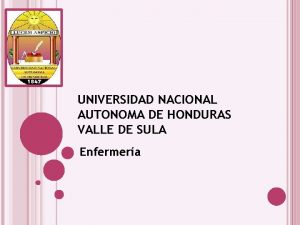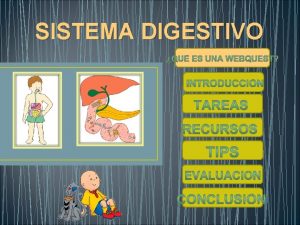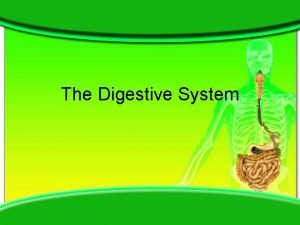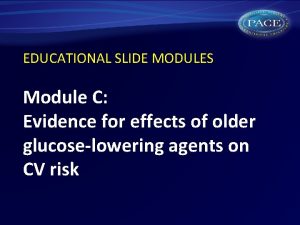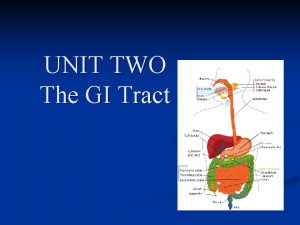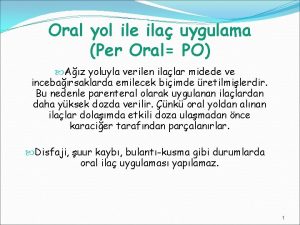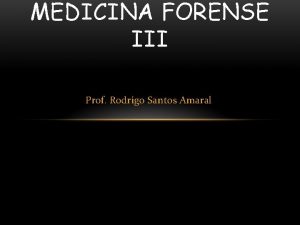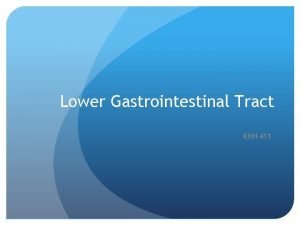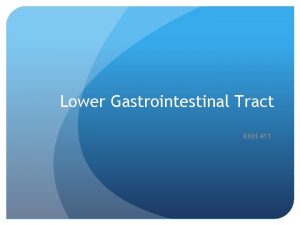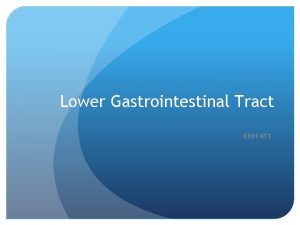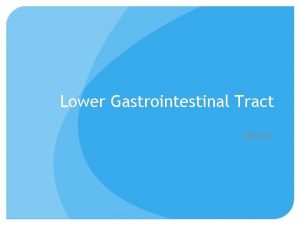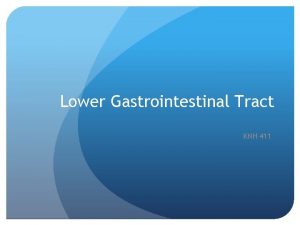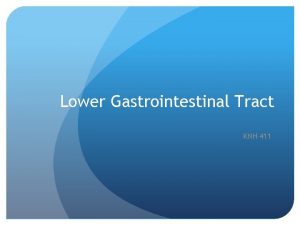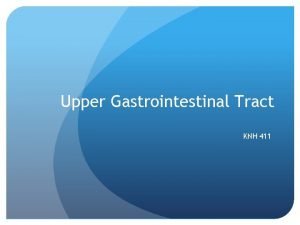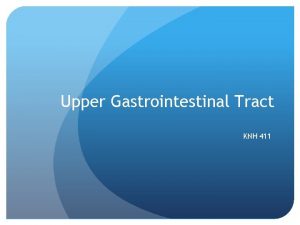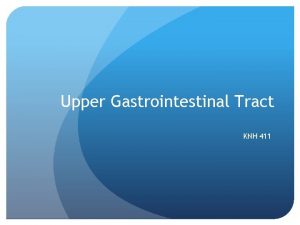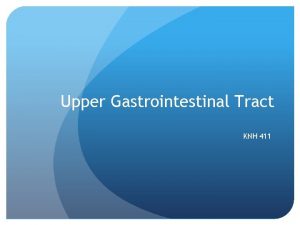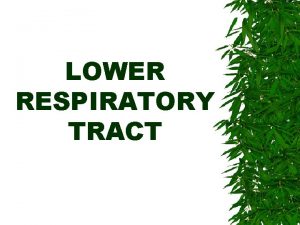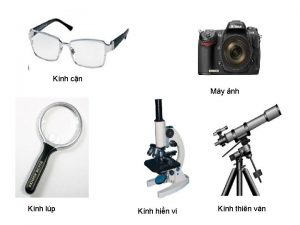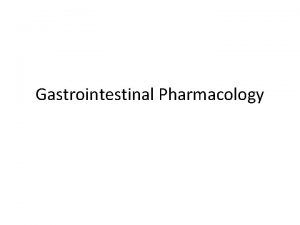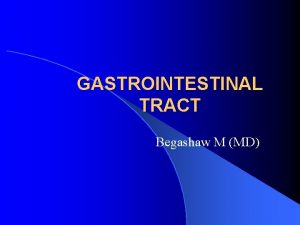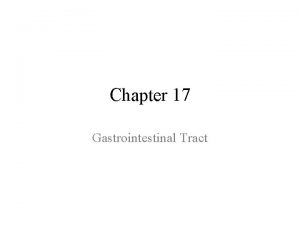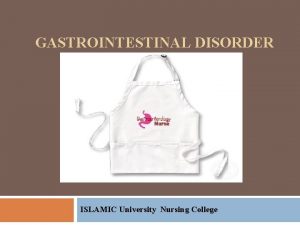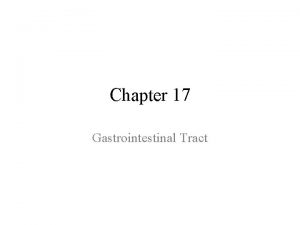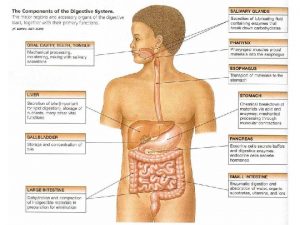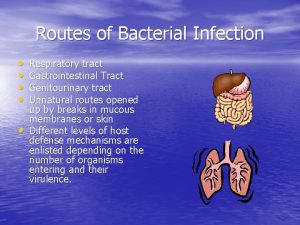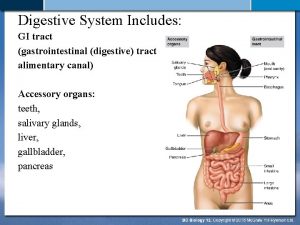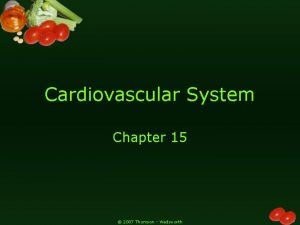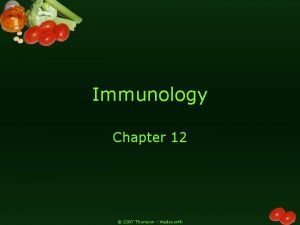Lower Gastrointestinal Tract KNH 411 2007 Thomson Wadsworth






























![Pathophysiology: Lower GI Tract IBD - Nutrition Therapy] Antibiotics May require nut support, TPN Pathophysiology: Lower GI Tract IBD - Nutrition Therapy] Antibiotics May require nut support, TPN](https://slidetodoc.com/presentation_image_h2/06037f5cdbac8f7ccd2bee059b7954e9/image-31.jpg)








- Slides: 39

Lower Gastrointestinal Tract KNH 411


© 2007 Thomson - Wadsworth



Pathophysiology: Lower GI Tract Malabsorption - maldigestion of fat, CHO, Protein Number one concern Decreased villious height, enzyme production Decreased transit time- recesting, surgury can alter or stress the GI Might need time to recover- Chrons, CD, diverticulitis Disfunction of an accessory organ

Pathophysiology: Lower GI Tract Malabsorption - fat Steatorrhea- fat travels undigested and malabsorbed , ADEK a concern, worry about kidney stones Fat-soluble vitamins malabsorbed Potential for excess oxalate(kidney stones) Abdominal pain, cramping, diarrhea Dg; fecal fat test or D-xylose absorption test, or small bowel x-ray

Pathophysiology: Lower GI Tract Malabsorption - Fat – Nutrition Restrict fat 25 -50 g/day= #1 Use of MCT supplements- medium chain triglycerides- must be shorted chain, body cannot activate enzymes and cab absorbed right into the system. Give gut a rest Pancreatic enzymes Chrones- take before their meals

Pathophysiology: Lower GI Tract Malabsorption - CHO Lactose malabsorption Increased gas, abdominal cramping, diarrhea Restrict milk and dairy products Diagnosed by lactose tolerance test- breath test Products such as Lactaid can be rec.

Pathophysiology: Lower GI Tract Malabsorption - protein Protein-losing enteropathy- excess of protein loss Reduced serum protein (shows in this lab value) Short term uses pre albumin Peripheral edema- Cells cannot hold water, fluid overloaded

Pathophysiology: Lower GI Tract Malabsorption - Nutrition Therapy Results in weight loss, loss of vit/ min Chronic PEM (protein energy malnutrition) Treat underlying disease/ nutrient being malabsorbed Amino acid formula Simple carbs Short chain triglycerides

Pathophysiology: Lower GI Tract Celiac disease Genetic and autoimmune Occurs when wheat rye barely is eaten (oats can be contaminated as well) Inflammatory state that creates antibodies Occurs when alpha-gliadin from wheat, rye, malt, barley are eaten Infiltration of WBC, production of Ig. A antibodies

Pathophysiology: Lower GI Tract Celiac disease - pathophysiology Damage to villi Decreased enzyme function Maldigestion and malabsorption Occurs with other autoimmune disorders- type 1 diabetes, r. arthritis, psorisis


Pathophysiology: Lower GI Tract Celiac disease - clinical manifestations Bone and joint pain, mouth sores Diarrhea, abdominal pain, cramping, bloating, gas Muscle cramping, fatigue Skin rash Higher risk for lymphoma and osteoporosis

Pathophysiology: Lower GI Tract Celiac Disease - Diagnosis/Treatment/Prognosis Biopsy of small intestinal mucosa Reversal of symptoms following gluten-free diet Refractory CD; d/t coexisting disease

Pathophysiology: Lower GI Tract Celiac Disease - Nutrition Intervention Low-residue (min diarrhea), low-fat 45 -50 g no more, lactosefree, gluten-free diet Identify hidden sources of gluten Specialty products Oats controversial- no more than 1/2 cup per day Much easier for individuals So many not CD are using this diet Of course you lose weight, its an elimination diet (eliminating calories), physiological effect, lose a lot of B complex/ fiber Make sure to supplement with B complex vitamins and get enough fiber Slight change in taste


Pathophysiology: Lower GI Tract Irritable Bowel Syndrome (IBS) Abdominal pain with two of the following, to truly have IBS: Pain relieved with defecation Onset associated with change in frequency of stool Onset associated with change in form of stool Eliminate “red flag” symptoms Difficulty eliminating waste products

Pathophysiology: Lower GI Tract IBS Most common GI complaint difficulty eliminating - more common in women Etiology unknown Increased serotonin, inflammatory response, abnormal motility, pain Stress trauma, emotional paindepression

Pathophysiology: Lower GI Tract IBS - clinical manifestations Abdominal pain, alterations in bowel habits, gas, flatulence Increased sensitivity to certain foods Concurrent dg Lactose, wheat, high fiber foods, fibormyalgia, CFS, food allergies

Pathophysiology: Lower GI Tract IBS - Treatment Guided by symptoms Antidiarrheal agents Tricyclic antidepressants, SSRIs (selective seretonin reuptake inhibitors (another antidepressant) Bulking agents, laxatives Behavioral therapies- to relieve stress

Pathophysiology: Lower GI Tract IBS - Nutrition Therapy Can lead to nutrient deficiency, underweight, or malnourished Due to constant pain/ depression Decrease anxiety, normalize dietary patterns (for dietitian to do)

Pathophysiology: Lower GI Tract IBS - Nutrition Therapy Assess diet hx (trigger foods) Assess nutritional adequacy Focus on increasing fiber intake- to 25 grams per day after crisis state Adequate fluid- 2, 000 cc for a 2, 000 calorie diet Pre- and probiotics- rebuild gut flora Avoid foods that produce gas!! AND SWALLowed air- straws



© 2007 Thomson - Wadsworth


© 2007 Thomson - Wadsworth

![Pathophysiology Lower GI Tract IBD Nutrition Therapy Antibiotics May require nut support TPN Pathophysiology: Lower GI Tract IBD - Nutrition Therapy] Antibiotics May require nut support, TPN](https://slidetodoc.com/presentation_image_h2/06037f5cdbac8f7ccd2bee059b7954e9/image-31.jpg)
Pathophysiology: Lower GI Tract IBD - Nutrition Therapy] Antibiotics May require nut support, TPN Malnutrition High cal, pro, fiber regimen Fe, Zn, Mg, electrolytes concern (Na, K, Cl replacement) May need to increase kcal, protein, micronutrients

Pathophysiology: Lower GI Tract IBD - Nutrition Interventions During exacerbation- if gut works use it, Ensure, supplement to keep GI tract function Supplement Assess energy needs + stress factor- 200 -500 extra calories per day May need to increase protein 1. 5 - 1. 7 g/kg bw Low-residue, lactose-free diet Small, frequent meals- that are high calorie, high protein Glutamine and AGRININE decrease inflammation

Pathophysiology: Lower GI Tract IBD - Nutrition Interventions May use MCT oil (for problems with steatorrhea) Restrict gas-producing foods Increase fiber and lactose as tolerated (out of crisis stage, up to 40 grams per day) Advancement of oral diet- individual basis Multivitamin- make sure they have one, B 12, Fe, Zn, Ca, Mg, Cu- want to make sure these are included in the MV specifically

Pathophysiology: Lower GI Tract IBD - Nutrition Interventions During remission/rehabilitation Maximize energy & protein Weight gain and physical activity Food sources of antioxidants, Omega-3 s Pro- and prebiotics- help gut flora become stronger

Pathophysiology: Lower GI Tract Diverticulosis/diverticulitis – abnormal presence of outpockets or pouches on surface of SI or colon/inflammation of these pockets In SI and/ or colon Low fiber intake- when they have it/ crisis state (minimize) History of constipation Increases inflammatory response Other risks Obese Steroids- for other disease states Alcohol/ caffeine Cigarette smoking Sedentary


Pathophysiology: Lower GI Tract Diverticulosis- do instruction then/diverticulitis pathophysiology Fecal matter trapped Development of pouches Diverticulitis- when matter is caught- bursts, GI bleeding, fever, abdominal pain, increased WBC count Food stuff- caught, infection Bleeding abscess, obstruction, fistula, perforation Worse case scenarios

Pathophysiology: Lower GI Tract Diverticulosis/-itis – Treatment/ Nutrition Therapy Specific focus on fiber- increase when not in crisis Pro- and prebiotic supplementation- help gut flora Acute- it is, NBO, bowel rest Antibiotics given to help inflammation Surgical resection

Pathophysiology: Lower GI Tract Diverticulosis/-itis – Nutrition Therapy -osis Avoid nuts, seeds, hulls- could get caught (may not be of a concern, new research? ) Fiber supplement (35 + 6 TO 10 grams) need some type of supplement -itis Bowel rest, clear liquids Avoid nuts, seeds, fibrous vegetables- want low fiber if they are able to eat at all
 Wadsworth thomson learning
Wadsworth thomson learning Wadsworth/thomson learning
Wadsworth/thomson learning Thomson learning inc
Thomson learning inc Thomson wadsworth
Thomson wadsworth Thomson wadsworth
Thomson wadsworth Wadsworth thomson learning
Wadsworth thomson learning Gastrointestinal tract
Gastrointestinal tract Which is not part of the alimentary canal
Which is not part of the alimentary canal Gastrointestinal tract
Gastrointestinal tract Gastrointestinal tract
Gastrointestinal tract Pyramidal vs extrapyramidal tract
Pyramidal vs extrapyramidal tract Rubrospinal tract
Rubrospinal tract 2007 thomson higher education
2007 thomson higher education Thomson higher education 2007
Thomson higher education 2007 Knh
Knh Knh
Knh How the respiratory system maintains homeostasis
How the respiratory system maintains homeostasis Upper airway anatomy
Upper airway anatomy Cls 212
Cls 212 Upper and lower respiratory system
Upper and lower respiratory system Hn wadsworth
Hn wadsworth Coglab
Coglab Wadsworth cengage learning
Wadsworth cengage learning Henry wadsworth longfellow short biography
Henry wadsworth longfellow short biography Pathophysiology of intestinal obstruction
Pathophysiology of intestinal obstruction Encéfalo
Encéfalo Sefalik faz
Sefalik faz Gastrointestinal hormones
Gastrointestinal hormones Gastrointestinal
Gastrointestinal Motilidad gastrointestinal
Motilidad gastrointestinal Embriologia del sistema gastrointestinal
Embriologia del sistema gastrointestinal Ashraf radwan
Ashraf radwan Sigid djuniawan
Sigid djuniawan Gastrointestinal medical terminology breakdown
Gastrointestinal medical terminology breakdown Why does metformin cause gastrointestinal problems
Why does metformin cause gastrointestinal problems Upper gi bleeding management
Upper gi bleeding management Emt chapter 18 gastrointestinal and urologic emergencies
Emt chapter 18 gastrointestinal and urologic emergencies Po ilaç uygulama
Po ilaç uygulama Livores violáceos
Livores violáceos Nutrition focused physical assessment
Nutrition focused physical assessment
